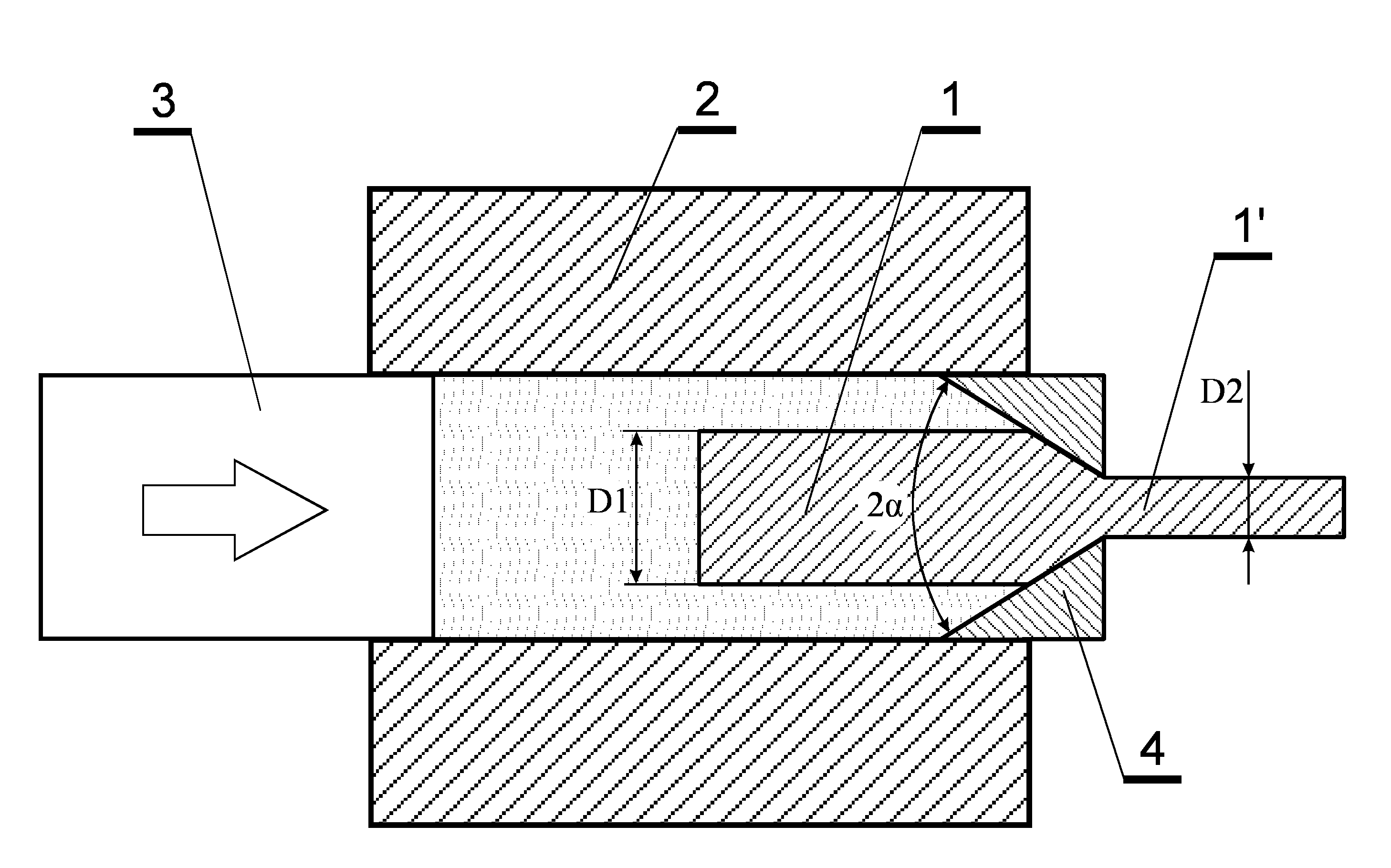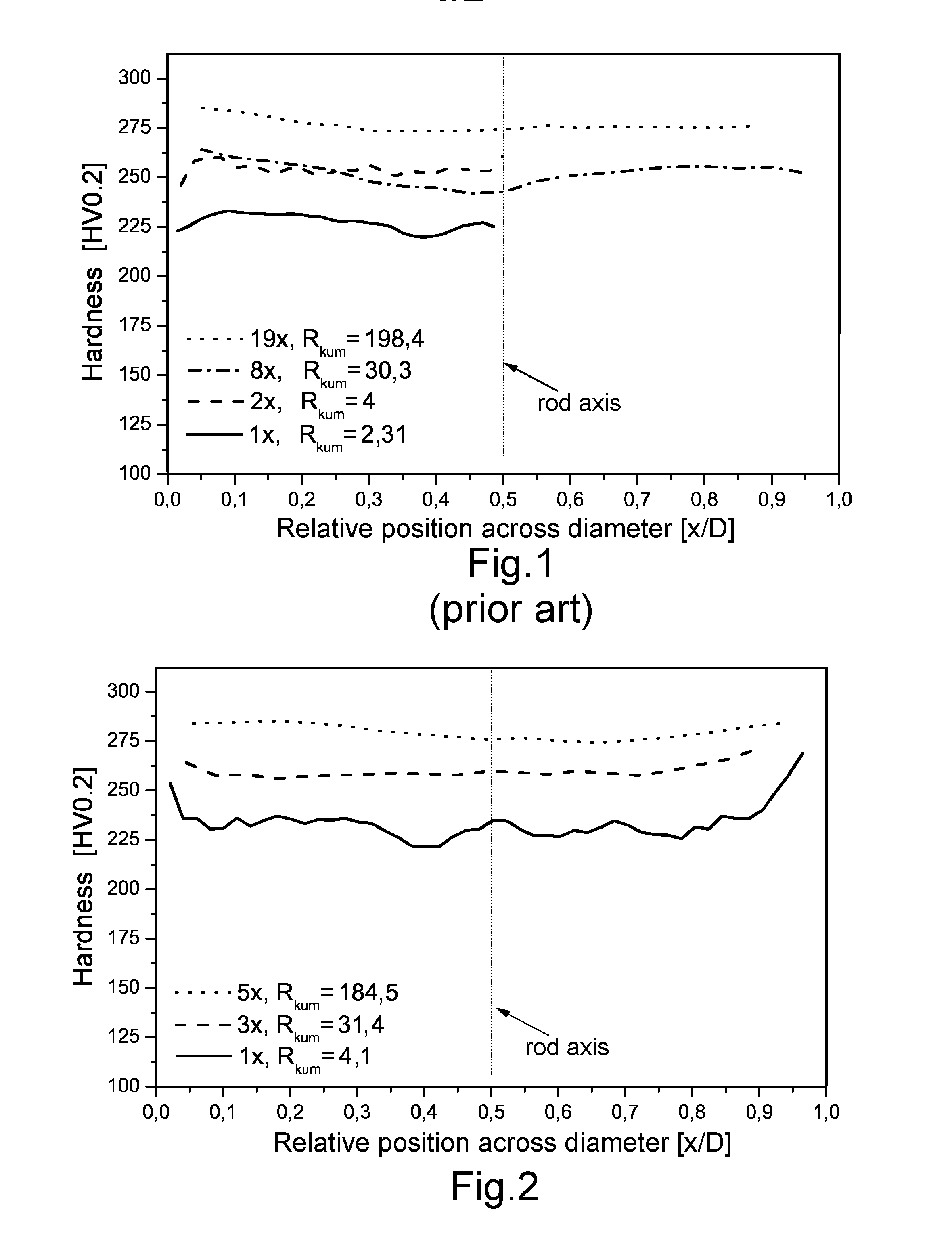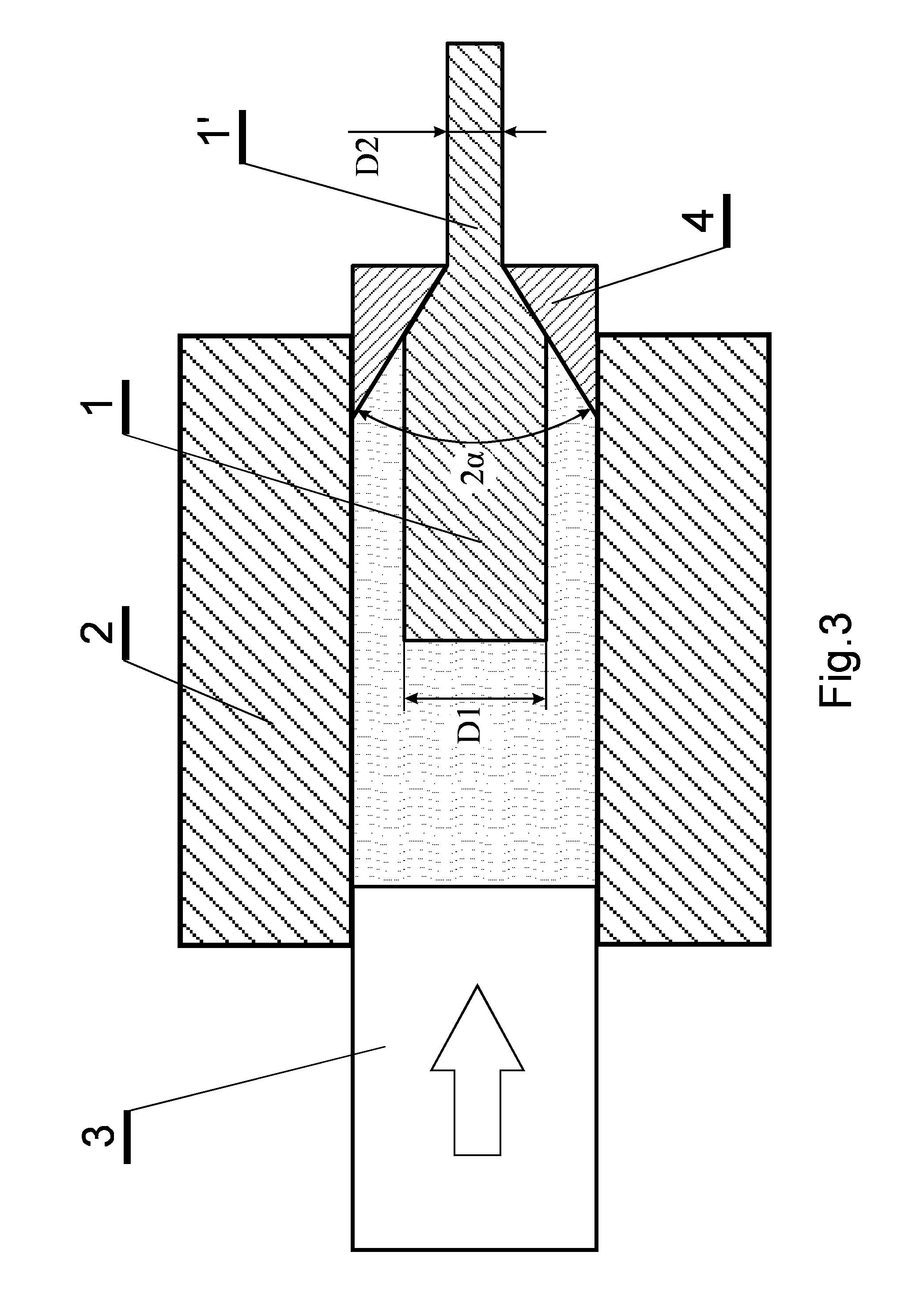Method of fabrication of nanocrystalline titanium, in particular for medical implants, and titanium medical implant
- Summary
- Abstract
- Description
- Claims
- Application Information
AI Technical Summary
Benefits of technology
Problems solved by technology
Method used
Image
Examples
example 1
Rod with a Diameter of 5 mm Made of Nanocrystalline Titanium
[0016]A rod containing above 99 wt % of pure coarse-grained titanium Grade 2 according to the ASTM Standard (American Standard for Testing and Materials) No B-348-09 was used for preparing the hydrostatic extrusion billet 1 in the form of a cylinder with the diameter D1=50 mm and length of 300 mm which at one side was ended with a cone with an apex angle of 43°. The billet was covered with a friction-reducing agent, which was an aluminum coating 10 μm thick, deposited on the titanium by magnetron sputtering, and, then, additionally covered with a wax layer. The thus prepared billet 1 was placed in the working chamber 2 of the extrusion apparatus and the chamber was closed with the piston 3. The cone-shaped end of the billet 1 was inserted into the conical hollow of the die 4. As a result of the movement of the piston 3 deep into the chamber 2, the pressure of the pressure transmitting medium increases and the billet 1 is ex...
example 2
Rod of Nanocrystalline Titanium with a Diameter of 5 mm
[0017]The titanium billet used in this example was the billet as in Example 1 but the aluminum coating deposited on it had a thickness of 15 μm. The billet was subjected to four consecutive hydrostatic extrusion passes through the die 4 with the apex angle 2α=45°. Just as in Example 1, the initial temperature of the billet did not exceed 50° C. During each of the three initial passes, the reductions R of the transverse cross-section surface area of the billet 1 were as in Example 1, whereas in the final fourth hydrostatic extrusion pass it was 2.1. The titanium rod obtained after this final pass had the diameter D2=6.1 mm i.e. the total reduction of the transverse cross-section surface area of the billet 1 was 67.2. The extrusion process was conducted so that the extrusion velocity did not exceed 10 cm / s. After each pass the product 1′ extruded from the die was cooled with cold tap water. Prior to each extrusion pass was covered...
example 3
Rod Made of Nanocrystalline Titanium with a Diameter of 3 mm
[0018]The titanium billet 1 as in Example 2 was subjected to five consecutive hydrostatic extrusion passes through dies with the apex angles 2α=45°. As in Examples 1 and 2 the initial temperature of the billet 1 did not exceed 50° C. In the initial four extrusion passes, the reduction R of the transverse cross-section surface area of the billet 1 was the same as in Example 1 whereas in the final (fifth) extrusion pass it was 2.34. The titanium rod obtained after this final extrusion pass had the diameter D2=4.16 mm i.e. the total reduction R of its transverse cross-section surface area was 144.5. The hydrostatic extrusion process was conducted so that the extrusion velocity did not exceed 23 cm / s and, after each extrusion pass the product 1′ extruded from the die 4 was cooled with cold tap water. Prior to each extrusion pass the billet 1 was covered with a wax layer. In order to improve the geometric feature (smoothness and...
PUM
| Property | Measurement | Unit |
|---|---|---|
| Grain size | aaaaa | aaaaa |
| Temperature | aaaaa | aaaaa |
| Pressure | aaaaa | aaaaa |
Abstract
Description
Claims
Application Information
 Login to View More
Login to View More - R&D
- Intellectual Property
- Life Sciences
- Materials
- Tech Scout
- Unparalleled Data Quality
- Higher Quality Content
- 60% Fewer Hallucinations
Browse by: Latest US Patents, China's latest patents, Technical Efficacy Thesaurus, Application Domain, Technology Topic, Popular Technical Reports.
© 2025 PatSnap. All rights reserved.Legal|Privacy policy|Modern Slavery Act Transparency Statement|Sitemap|About US| Contact US: help@patsnap.com



